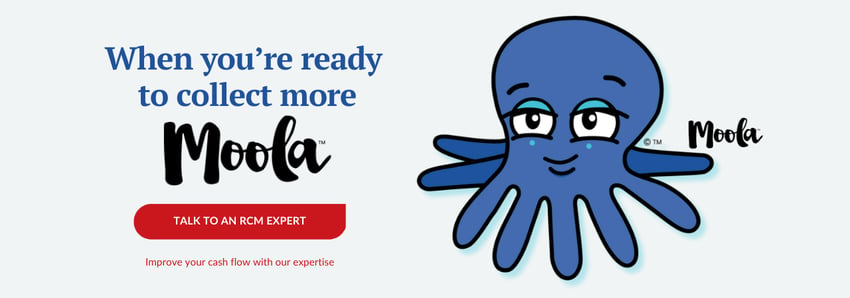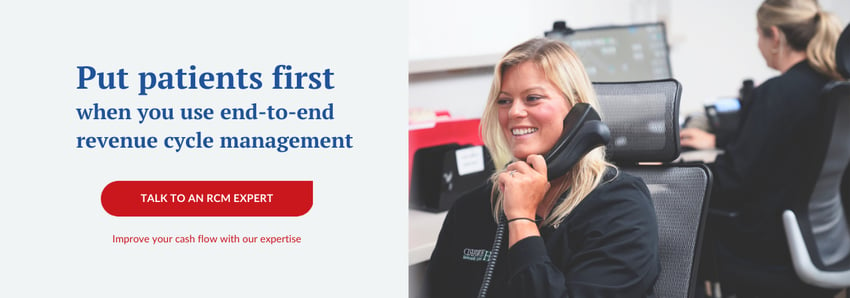Looking for success in a PPO dental network? 10 helpful tips for dentists


Being in a PPO dental network has some great advantages. You’re accessible in the dental network which is a valid marketing strategy. For dentists, this first step makes a huge difference to your financial success. But now that you’ve sent claims, what does it take to make a PPO practice successful?
Dentists go to dental school to learn about clinical dentistry, but don’t get the business training they need for financial health.
That’s why Dental ClaimSupport’s services are all about helping dental practices become more profitable and successful.
Through our 10 years of work, we’ve taught our billers how to streamline the daunting task of insurance billing and collect more revenue for dentists and their teams. Because of this experience, we know what can make a PPO dental network successful or what may hinder it.
In this article, we will share 10 tips to make a PPO dental network successful. From scheduling, to practice management, to properly adding PPO plans in your software - these tips are hyper-specific to PPO practices. And they will help you be more organized, profitable, and innovative.
1. Keep your team trained on the latest version of your software
We’ll say it until we’re blue in the face - education is the KEY to running a successful dental practice, including a PPO dental network. And it must be continuous.
We all know dental rules, regulations, and technology are always evolving and changing - so it’s all of our jobs to stay educated on it. Your software is a huge part of your practice that everyone on your dental team needs to stay trained on, specifically the most recent version of it.
Whenever there is a software update, take some time to go through the changes with your team to make sure everyone knows the changes. Look for any areas of inefficiencies that your team may have such as understanding your re-care, schedule reports, and finding patients who need treatment and are not scheduled.
Make sure everyone knows how to efficiently track and log the patients who are in need of treatment and to schedule them.
If you have team members who know some good tips or best practices for using the practice management software, make sure they feel comfortable sharing them with other team members.
2. Offer same-day service treatment when the schedule allows or has an opening
This can be a really big draw for patients, especially those who are busy and have rare opportunities for openings. This can also be appealing to patients who need a service ASAP.
This might be hard with your current billing system, but if it is a well-oiled machine, you should know how to set up your software to properly estimate the patients out of pocket expenses pretty quick.
For example, let’s say the patient is in for their routine cleaning and the dentist treatment plans a bruxism appliance for the patient. It turns out you have some extra time in your day, and an open chair. Have the front office team estimate the patient’s out-of-pocket expense, explain it to the patient, and you can complete the treatment that day (if the patient also has time).
You should then be able to make the financial agreement or arrangement with the patient quickly. Then you can scan or impress the patient in the hygiene room or an open treatment room. This means you increase your cash flow for the day, and the patient completed their treatment and it’s over and done with. It’s a win-win.

3. Reduce no shows, cancellations, and openings in the schedule
Keep your re-care system strong and openings rare. We don’t mean over-book yourself, we just mean to keep the schedule full so that you have a healthy rotation of patients every day.
Look for patients who are scheduled and want to come in sooner if you have an opening. Use the tools that almost every practice management software has. This includes “ASAP”(as soon as possible), “SIP” (sooner if possible), or “short call tickler” reports.
These tools (if the staff is trained) are a must for a PPO provider and best practices for any dental practice to use. Worry about the schedule for today first, then tomorrow, and the next day! Be proactive and keep hygiene busy.
This means you’re not just organizing patients into these categories, you’re following up with rescheduling when they are a no-show and getting that chair filled ASAP.
4. Develop an effective confirmation program by automating your software reminder program
Set your expectations for appointments (especially long appointments or patients who have a bad appointment keeping history).
This means when you are on the phone scheduling original appointments with patients, let them know your process, how you will remind them and how important it is that they keep their appointment.
This means you tell them how often they’ll be texted or emailed as a reminder and/or confirmation. This can be done through your practice management software. This kind of automation can go a long way in reminding patients of their appointments, especially if it is several months away.
You’ll face fewer cancellations and no-shows when you take advantage of the automation technology that will remind your patients multiple times about their appointment. This means a fuller schedule and more money in your pocket.
5. Do not turn your practice into a bank!
Most dentists are great at dentistry but fall short when it comes to lending patients money. Yes, when you have informed a patient of their responsibility and have a firm signed FA (financial agreement or arrangement) and they do not pay, you are now essentially a Dental Bank.
What do we mean by this?
Well, we have heard patients say things like “just send me a bill” as they run out the door quickly. Frustrating, we know! You then have to depend on their promise to pay.
You can print one out and hand them a bill right then and there. Do you know it costs approximately $10.00 to print and mail the patient a statement? Yes, you have the employee time to (print, fold, stuff in envelope, seal, and stamp), paper, ink, printer use, envelope, and stamp.
Related: 5 ways to successfully collect payment from dental patients
This is an overhead expense that you don’t need. Collecting it right there on the spot. Although you are a healthcare service, you are a place of business. If you let payment from patients slip, you’re missing money to pay your staff and maintain your office.
We know you want to be understanding, but you are not running a non-profit practice - offering different payment methods, or splitting up/phasing treatment into multiple separate visits helps make their dentistry more affordable.
This is how you still receive payment, by meeting the patient in the middle.
6. Keep the overhead as low as possible, but do not sacrifice the quality of the dental work your practice provides.
This means you should be efficient in how you staff your office - don’t overspend on unnecessary things. However, if you’re taking on more patients than you can, and everyone on your team feels rushed or overwhelmed with work - it’s time to hire another person or outsource to a service for additional help.
Patients will notice if your team doesn’t have time for them. They will notice if you’re stressed or rushed, making them feel like just another number in the dental chair.
And this bad experience holds more weight than you think. A bad reputation for a dentist can be hard to mend - so make sure every expense you have is helping your practice run smoothly, while also not draining your cash flow.
7. Keep your patient service level high
Speaking of patient experience - high-quality patient service needs to be your #1 priority. This helps create what we call “refer-ability.”
Patients who feel welcome, comfortable, and cared for will refer friends, relatives, and neighbors to your practice. Build relationships with your patients and get to know them as a person.
They do not know good dentistry other than it looks good and feels good and you didn’t hurt them! A good injection that is relatively pain-free goes a long way. Patients will notice if you’re making their comfort a priority. Some people have a lot of anxiety surrounding dental visits, so if you do everything you can to lessen this anxiety - they’re going to appreciate you and tell their friends about you.
This means more patients in your schedule and more money in the bank.
8. Bill out your full fee on the ledger and insurance claim form always
Most PPO contracts require you to bill your full fee. If you submit the reduced fee, you will rarely get an increase in your fee from the PPO (most plans will review the fee every 2 to 3 yrs). Your patients should be able to see your full fee and appreciate the PPO contractual write-off you gave them by signing up for the PPO plan.
The adjustments should be made after the primary and secondary insurance has been paid. Make sure that the staff member posting is fully trained on when to post the PPO adjustment.
We have seen practices post the PPO fee adjustment on the primary PPO and the secondary PPO, which results in the patient getting a big credit applied toward their future dentistry. There were no systems in place to prevent that from happening and now the practice lost unnecessary revenues!
-1.jpg?width=618&name=DSC00294%20(1)-1.jpg)
9. Make sure the fee schedule is put into your software properly
It’s common that some dental staff members do not understand how the PPO plan works, what carriers may be leased on the PPO, and what the allowed fee table/schedule is.
This can cause problems with claim submission and with collecting payment from the patients.
If your PPO fee schedules are not set up properly, your software won’t be able to accurately estimate the patient and insurance estimated amount due. Make sure the plan benefit percentages, allowed amounts, and details of the plan are entered correctly into the software.
Not having accurate information can make it difficult when dealing with patient billing.
Having your PPO fee schedule properly set up in your software gives your administrative team members more time to spend on keeping the schedule full, and spend less time and money sending patient billing statements - because they will get clear and accurate estimations of out-of-pocket costs.
10. Think of your PPO write-offs as a marketing expense - not a loss
A huge reason to sign onto PPO plans is to bring new patients into the practice.
Is your practice listed in the PPO directory? Is the information correct? When was the last time you or your team members asked a new patient how their visit was?
If their experience was positive, then you ask them to share a Google review and/or hand them a business card and let them know you look forward to meeting their spouse, neighbors, etc.
Most PPO plans you are in a contract with help advertise your dental practice, and this can be hugely beneficial to your revenue stream. In a lot of ways, it feels like free advertising but if you’re annoyed by the fees you have to write-off for the PPO plan, think of them as marketing expenses.
The PPO gets your name out there the way an Ad agency would.
Ready to take your dental practice’s success to the next level?
These are just a few ways your PPO dental network can be successful, organized, and profitable. Keeping your team educated on dental billing best practices, collecting from patients, and properly setting up your fee schedule in your software will help you and your team feel confident in their roles, which will lead to even more success.
Dental ClaimSupport is another resource your team could utilize to take your dental practice’s success to the next level. Our billing services can lead to a more profitable dental practice through claims income, while also relieving your in-house team of insurance headaches. Keep your skills sharp with dental billing courses at the Dental Claims Academy.
To learn more about outsourcing your dental billing and how it can lead to success, check out our Ultimate Guide to Outsourcing Your Dental Billing.

Related Posts
Dental revenue resources from Dental Claim Support

